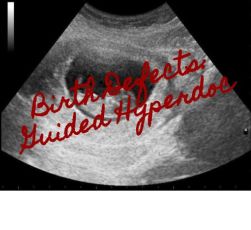
Assigning hyperdocs for distance learning may seem like you aren’t the “sage on the stage”, however, even as the “guide on the side”, you can make them somewhat interactive. I use this “Birth Defects Guided Hyperdoc” as my plan or outline. Students complete it in sections, but we come together to discuss or go over parts along the way. This is one of the best ways I can make my hybrid virtual (Zoom) classroom mirror my traditional classroom. Doing this saves me time and frustration, in the end and I’m really just reworking my original activities, just in a little different format. So, please check out the “Birth Defects Guided Hyperdoc” to see what I mean!
Set
- I always begin my birth defects unit by exploring the difference between heredity and environment. To do this, students will view a short YouTube video called, Stepping Stones and explain the differences on their hyperdoc.
- Based on their answers, students must engage in the “Drag & Drop” activity on Google Slides (see the hyperdoc attachment), showing me they understand the difference between the terms. Normally, this would be a hands-on sorting activity, but due to social distancing…this is the next best thing!
- After students screenshot their “Drop & Drag” sort into the hyperdoc, we go over the answers, discussing why traits are placed where they are.
Materials
- iPads or Laptops
- Screens & Projector
Activities
- Next, I ask students to make connections between the terms heredity and environment and birth defects. To see if their predicted connections are correct, students read a short article from Sciencing and fill in the chart. They further research, using reliable web-resources, whether or not hereditary and environmental birth defects can be prevented.
- Again, in the traditional class, I would talk about how birth defects can be detected, but in the hybrid/virtual format, my students explore and briefly explain the procedures on the hyperdoc, using the CDC resource. Afterwards, I share some personal examples from family and friends. Students often jump in with their own stories as well and there’s no reason this can’t be done in a hybrid/virtual class too!
- After making the lesson shared by Linsey Haywood Birth Defect Scenarios & Resources Google Classroom friendly, I assign it to my students just like I would have done in the regular classroom, but sans paper. After completing the assignment, students complete a couple of reflection and extension activities.
- First, they read the poem “Welcome to Holland” and write a short reflection on it around the provided prompt. Discussion is optional depending on whether all of your students are finished with the scenarios.
- Finally, students explore the role folic acid plays in pregnancy and birth defects. If time permits, I show this YouTube video titled, “The Importance of Folic Acid” to reinforce the information they just learned.
- Once all of the hyperdoc components are completed, students submit it to Google Classroom for grading.
Attachment
- Birth Defects Hyperdoc (please make a copy)
- Drop & Drag–Heredity-Environment or Both (please make a copy)
- Birth Defect Scenarios (please make a copy)
- Birth Defects in Infants Information Packet (PDF)

